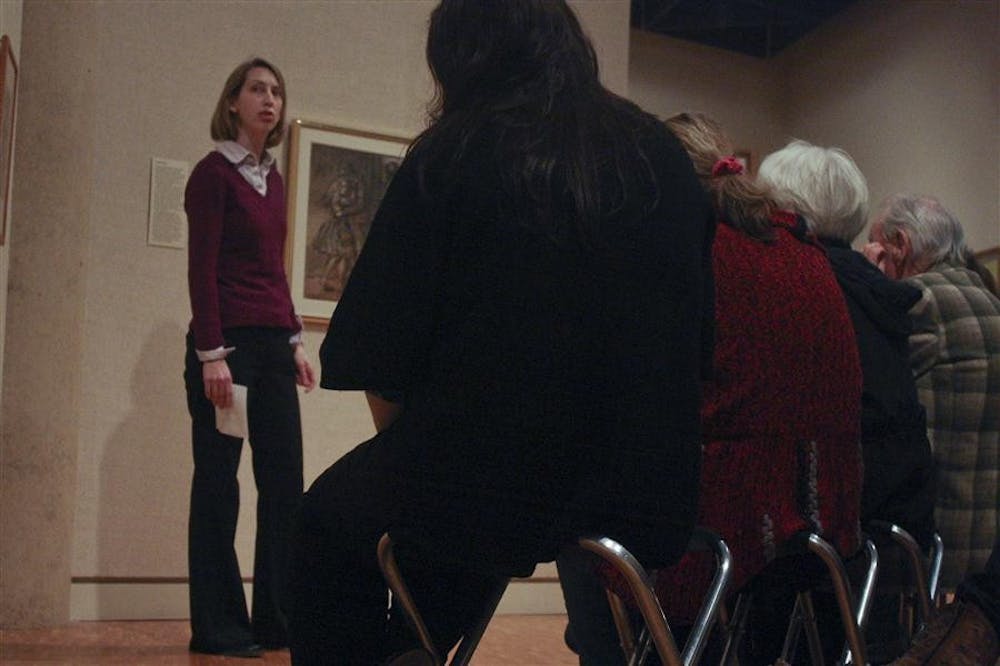In light of the March Women’s History Month, Phoebe Wolfskill, visiting assistant professor for the IU Department of the History of Art, spoke at the monthly IU Art Museum Noon Talk on Wednesday about the portrayal of women in artwork.
Focusing on the 1930s works of Reginald Marsh, Wolfskill analyzed the pieces with about 25 patrons and discussed the way the artist depicted women.
Marsh’s works included four prints and one double-sided drawing and feature what is known as “the Marsh girl.”
The women in his pieces are full-figured and curvy, a concept that he developed from the Renaissance and made modern with the locations, occupations and roles women play in society.
Marsh, a proclaimed American regionalist, set many of his works in New York City and other urban environments, which contrast other regionalist artists.
The women in the pieces displayed at the museum are portrayed in settings such as Coney Island, the Metropolitan Opera, the streets of New York City and even a burlesque hall.
Wolfskill said the women in the works, while sexualized, are depicted in a variety of occupations, from a working woman to a stripper. In a way, the woman are even sympathized by the artist, Marsh said.
“He’s showing that image that comes out of Hollywood and advertisement, but he’s also responding to the change of women in today’s society,” she said.
The works, coming from the Great Depression, according to Wolfskill, are important because they offer a glimpse into American history.
“Marsh, I think, allows us to see a lot going on during the Great Depression,” Wolfskill said. “I think it’s always important to understand history.”
Wolfskill said especially with the state of the country now — the lack of employment and the fall of the housing industry — there is a similarity between Marsh’s time and the present.
“We’re revisiting the Great Depression now,” Wolfskill said.
Nan Brewer, the Lucienne M. Glaubinger curator of Works on Paper, said the talk pulled more details from the works a patron might not have simply received from reading the labels.
“I want people to be stimulated and to appreciate the artwork,” Brewer said.
According to Brewer, Marsh’s artwork will be on display at least until the end of the semester, if not the summer.
Visiting professor analyzes the depiction of women in art

Get stories like this in your inbox
Subscribe





